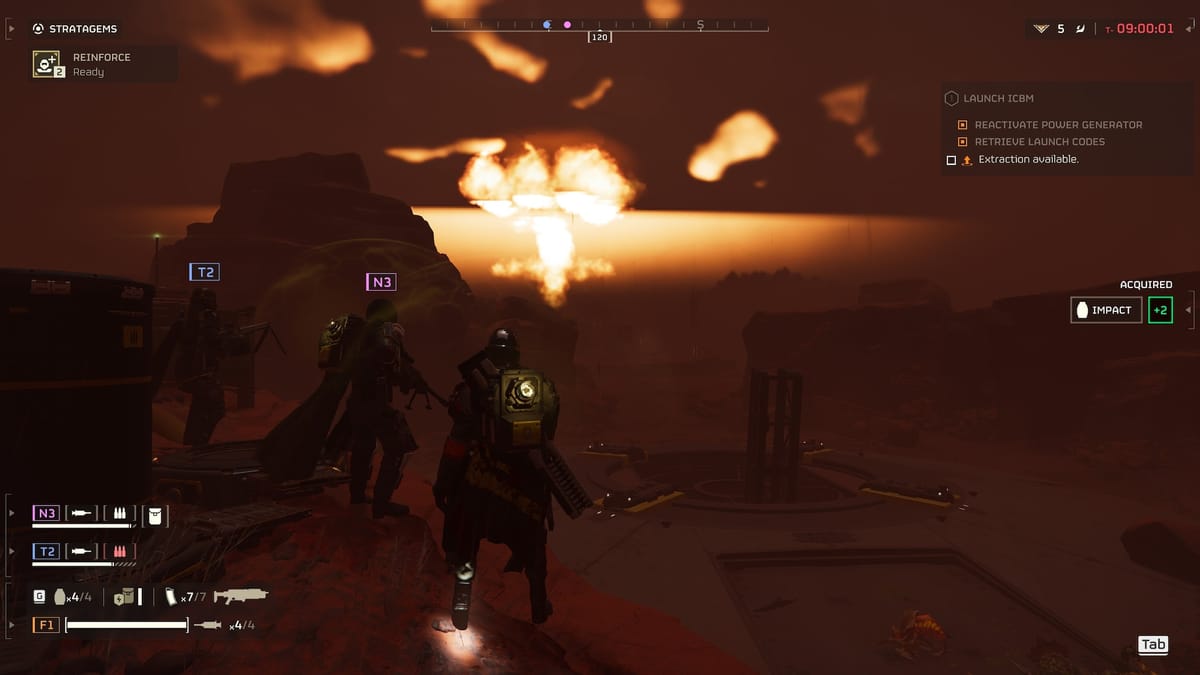Helldivers 2 Planetary Hazards All Possible Weather Effects Explained

Helldivers 2, a highly anticipated sequel to Arrowhead Game Studios' Helldivers, brings a fresh wave of excitement with its innovative gameplay mechanics and enhanced features. Among the numerous additions, the Planetary Hazards system stands out, particularly its dynamic weather effects that not only enrich the game's immersive experience but also introduce strategic depth to the battlefield. This article delves into all possible weather effects in Helldivers 2, explaining how they impact your gameplay and offering strategies to navigate these challenges.
The Essence of Planetary Hazards
Helldivers 2 elevates the concept of environmental interaction by embedding Planetary Hazards — a feature that dynamically alters the battlefield through various weather conditions. This not only adds a layer of unpredictability but also compels players to adapt their strategies on the fly, making each mission uniquely challenging. The game randomly generates these conditions, and their intensity can vary, affecting visibility, movement, and even the effectiveness of certain abilities or weapons.
Intense Weather Conditions and Their Impact
1. Heavy Rain
Heavy rain reduces visibility and slows movement, making rapid maneuvers difficult. It affects both players and enemies equally, turning engagements into sluggish, grueling battles. To adapt, players can equip all-terrain boots to negate the movement penalty and focus on weapons that perform well at close to mid-range, as long-distance visibility is compromised.
2. Strong Winds
Strong winds can drastically affect projectile trajectories, making ranged combat unpredictable. Bullets and grenades can veer off course, complicating engagements. The key strategy here is to lean into energy weapons or guided munitions that are less affected by wind. Positioning also becomes crucial; engaging enemies downwind can mitigate some of the wind's effects.
3. Sandstorms
Sandstorms drastically reduce visibility and can disorient players, making it easy to stumble into enemy patrols or dangerous terrain. Relying on radar pings and sound cues becomes vital in these conditions. Equipping weapons with thermal or radar sights can help pierce through the obscured environment, ensuring that you're not caught off-guard.
4. Snowstorms
Snowstorms combine the visual impairment of sandstorms with the movement hindrance of heavy rain, compounded by the added challenge of cold affecting equipment functionality. Thermal gear can help maintain mobility, while choosing weapons that are less susceptible to cold ensures reliability in combat.
5. Electric Storms
Electric storms can randomly disable equipment and vehicles, making reliance on technology risky. During these storms, it's advisable to equip non-electrical melee weapons or purely mechanical guns. Coordination among team members to cover for disabled equipment becomes crucial for survival.
6. Volcanic Ash
Certain planets near volcanic activity may experience ash clouds that can damage armor and equipment over time. Wearing protective gear that mitigates environmental damage is essential, as is ensuring swift completion of objectives to minimize exposure.
Weathering the Storm
In Helldivers 2, understanding and adapting to these weather conditions is key to planetary conquest. Here are a few general tips:
- Stay Flexible: Your loadout should be versatile enough to handle unexpected changes in weather. Consider carrying one weapon for general use and another that performs well under specific conditions.
- Communication is Key: More than ever, staying in touch with your squadmates is vital. Coordinate movements, share observations about weather patterns, and plan engagements with the conditions in mind.
- Environmental Advantage: Sometimes, weather hazards can work in your favor. Use them to ambush enemies or evade detection when mobility or visibility is impaired for both sides.
- Reconnaissance Matters: Scout drones and radar enhancements become invaluable in predicting and navigating through harsh conditions. Using them wisely can give you a strategic edge.
Conclusion
The Planetary Hazards system in Helldivers 2 introduces a dynamic layer of strategy that requires players to constantly adapt their tactics to overcome environmental challenges. Whether it's battling through a blizzard or navigating a sandstorm-ridden desert, the weather effects significantly impact gameplay. By preparing for these conditions and mastering the art of adaptation, Helldivers can ensure their missions are successful, regardless of what Mother Nature—or in this case, alien planets—throws their way. In Helldivers 2, the battle is not just against extraterrestrial enemies but also against the very planets themselves. Victory belongs to those who can weather the storm.



